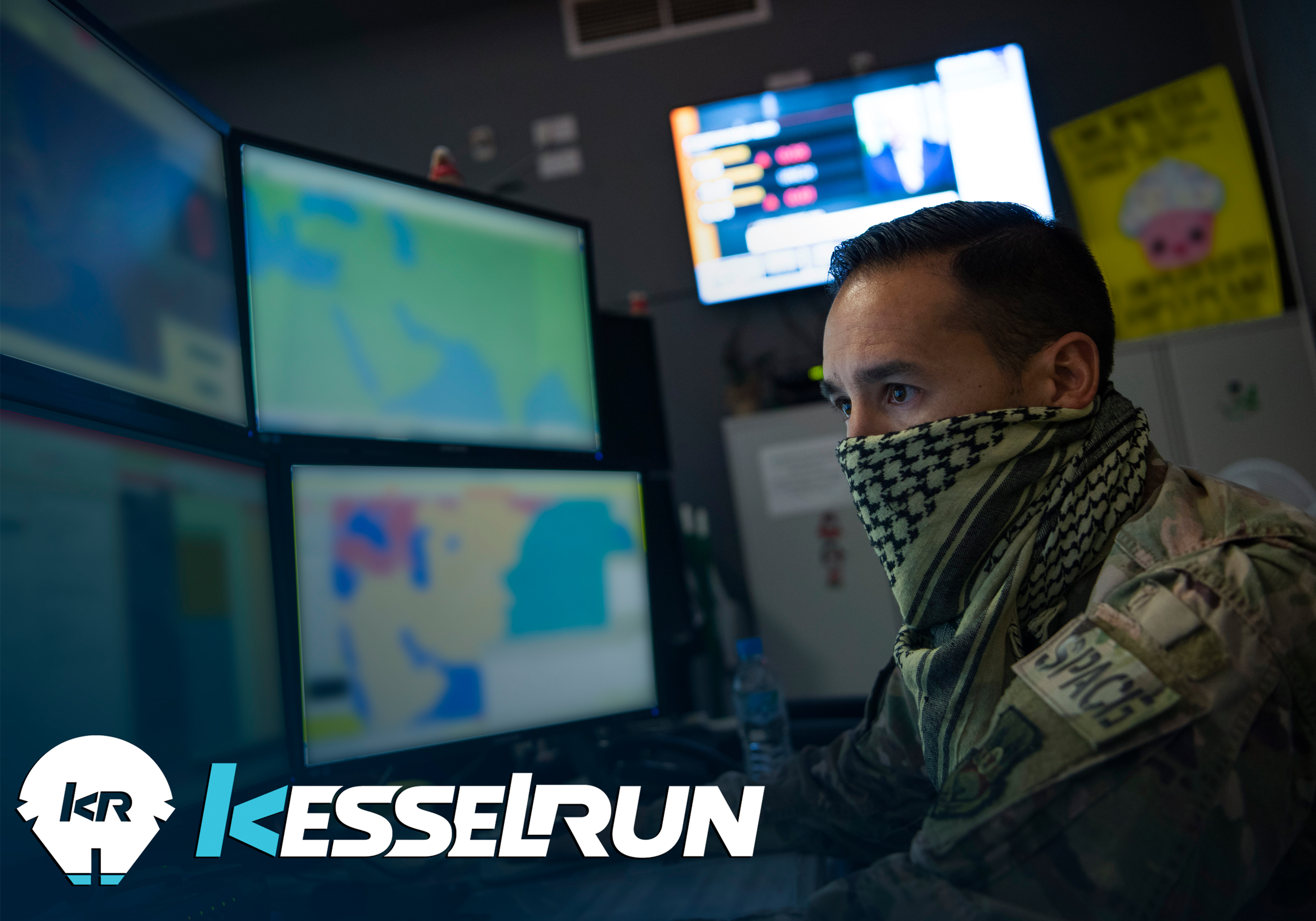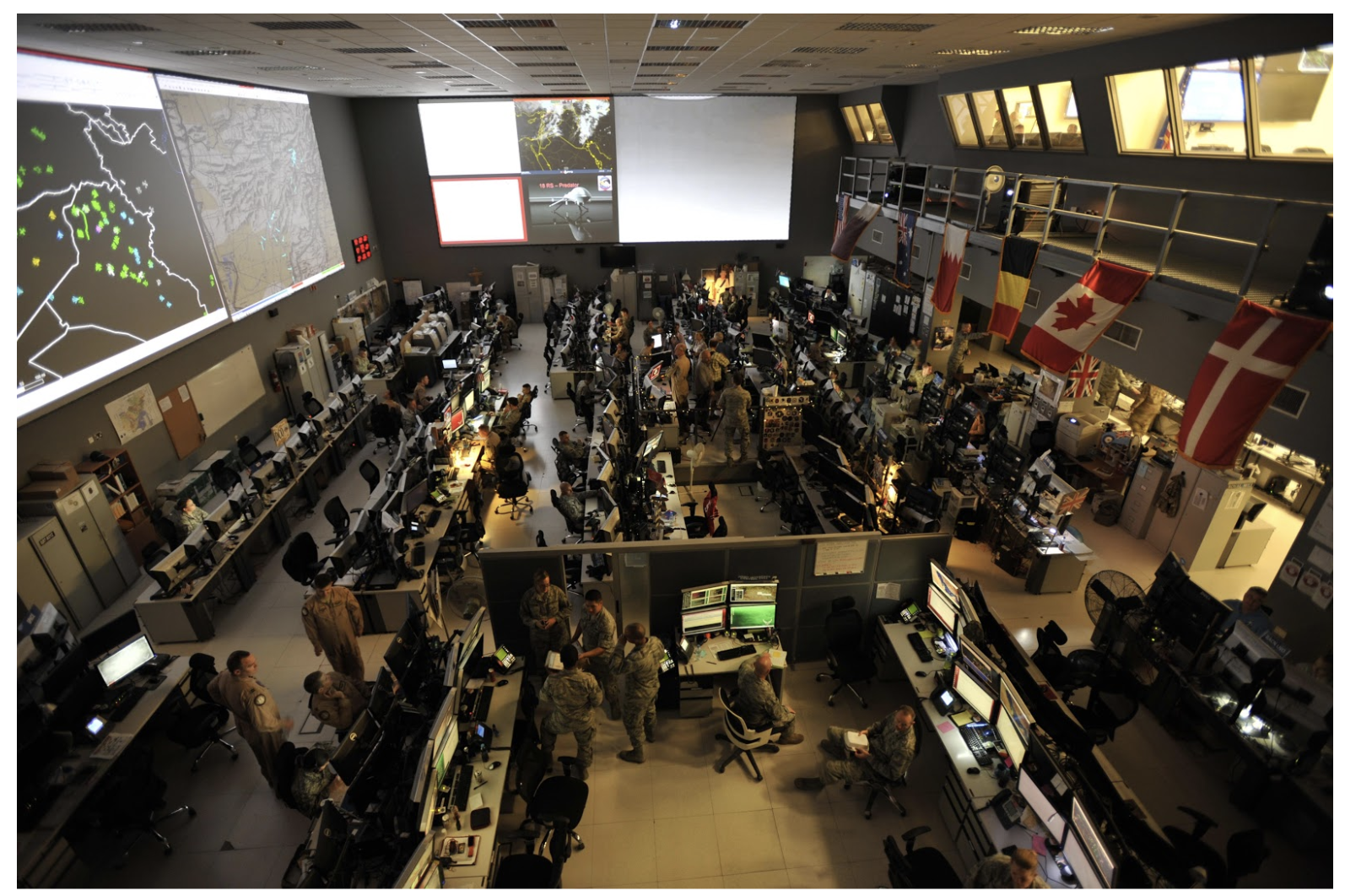Kessel Run Deploys KRADOS to Air Operations Center
January 12, 2021, By Bruce Katz & Peter Ising, Kessel Run

At an Air Force Association Symposium, Dr. Will Roper, the Assistant Secretary of the Air Force for Acquisition, Technology, and Logistics said, “The speed at which warfighters can make decisions on the battlefield is what must be dominated and won to claim victory in the conflicts and wars of the future.”
To that end, at Kessel Run (KR) we can’t think of more exciting news than the recent stand-up of the integrated KRADOS suite at the 609th Air Operations Center (AOC) in December 2020.In November 2020, the 609th AOC threw down the gauntlet, “TBMCS (Theater Battle Management Core Systems) continues to give us problems. When can you have KRADOS ready? Our warfighters want to field & test it, even if we expect some initial pain.”
Kessel Run took that request and made it a challenge. Three weeks later, KRADOS was delivered.
“Over the last three years, we’ve released several individual applications that have addressed minor workflows within the Air Operations Center. What we’re doing is releasing a suite of applications that are integrated for the first time,” said, KRADOS Product Director, Ken McDougall.
Kessel Run has several applications being used in the 609th AOC. Those applications include Jigsaw, our tanker planning app which has been used for every refueling mission in 2020. And Slapshot, which builds the Master Air Attack Plan (MAAP).
"Theoretically, users interacting with an integrated Jigsaw and Slapshot can have the tanker plans be reflected in the overarching MAAP with a seamless transition of data flows. We hope they will be able to collaborate across functional teams within an Air Operations Center. Our goal is to shorten some of the feedback loops and help our warfighters make more informed decisions, fast,” McDougall explained.
This is an important milestone in the journey to modernize the AOC and eventually realize the vision of the Block 20, distributed AOC weapon system, allowing the service to later deprecate the existing 10.1 Falconer Weapon System.

“The true value of Kessel Run is when you see it as an overarching capability,” explains Lt. Col. Max Reele, the Deputy Commander of Kessel Run.
He added, “If you only deliver stand-alone applications, you’re going to be left with smaller monoliths in the end. If your applications aren’t integrated and queuing off of each other with the data pass they need to be accurate and timely with their capability to be operated against we’ve done nothing, but build better ways of doing individual tasks within the AOC.”
As the 609th works within the KRADOS suite, it enters a new stage of product use and availability. Today, the 609th is using stand-alone versions of our applications like Jigsaw and Slapshot to create and produce elements of the ATO/ACO. With the KRADOS deployment, the AOC will have the latest version of the system and also be able to operate in both the stand-alone environment of applications or in the integrated KRADOS suite to plan and execute parts of the ATO/ACO.
Colonel James Lotspeich, Kessel Run’s OpsC2 Product Line Chief, believes this is significant and a great benefit to the Air Force.
“The warfighters of today, and the future, are not seeking individual applications or solutions to answer one specific problem or need. Instead, commanders and military leaders are most interested in creating an integrated, adaptable, and complete system to ingest data, calculate solutions, offer network-enabled delivery of information and give real-time executable plans and guidance to decision-makers. This is the vision of the Dynamic Tasking Order (DTO).”Essentially, what Lotspiech is talking about is, “Uber of Air Power.” The DTO is a term that applies to all targeting that is prosecuted outside of the current pre-planned air tasking order (ATO) targets and occurs on a much more real-time basis. This demand and focus place a higher priority on the larger, integrated weapon system with the ability to gather and share data, recognize immediate opportunities and targets, identify available assets and support elements, and deliver plans and guidance to warfighters with the same speed at which new information is identified and collected. For this reason, data and speed mandate and drive our development of a secure and proven weapon system to deliver war-winning capabilities to future generations of Airmen.
Mr. Steven D. Wert, the Program Executive Officer Digital, Air Force Life Cycle Management Center added, “This is a major step for the AOC Weapons System, satisfying a priority objective that the canceled AOC 10.2 program could not achieve. At the same time, this is the beginning of something much larger than the AOCs. It is a first step in the machine-to-machine connections between applications that will continue beyond a singular program and offers the promise of connecting AOCs with Wing and tactical level applications across the Air Force, Space Force, and other Services. This is the initial realization of the design pattern supporting the Joint All Domain C2 operational concept.”
But true to agile DevSecOps, McDougall does not expect the release of any minimum viable product (MVP) to be perfect.
“We know today that we aren’t quite there and we need to figure out why. And the best way we can do that is by having warfighters interact with KRADOS. Then, they can tell us the real reason why something isn’t working. By doing that we can immediately start our day two operations and fix those problems. We can start providing clarity and feedback to the status of what’s happening to help them get the information they need to achieve their objectives. Nobody gets it right the first time. We can react to what we got wrong, correct it and take the next step that is going to make the difference”
By using the opportunity to have the existing system and the new KRADOS system operating side-by-side, we can accomplish so many things. We will be able to create shorter feedback loops and ship, sense, and respond with greater efficiencies and speed to iterate on the KRADOS product and improve the UX, thereby elevating the level of confidence and buy-in from users and mid-level stakeholders. This keeps us true to our core value of “Intense Customer Focus.” Another opportunity for this event is to answer and address the questions and concerns some may have about the Kessel Run applications concerning security, development, and test practices. When KR can collect data, engage in customer interviews, and gather other valuable feedback, we can respond with product improvements and value that is key to user and stakeholder adoption of the newer, larger tools and assets. This also showcases our “Bias for Action” and “Continuous Evolution” core values, thereby amplifying and demonstrating the mission of Kessel Run -- to continuously deliver war-winning software that warfighters love!
This opportunity has been much anticipated and follows some organizational delays due to our use of feature flags and supporting variances in prod instances. This has been incredibly painful to resolve and is a strong reason to double down on automation and CI/CD practices that are designed to address situations like this. Together, Kessel Run will deliver the vision of our stakeholders.